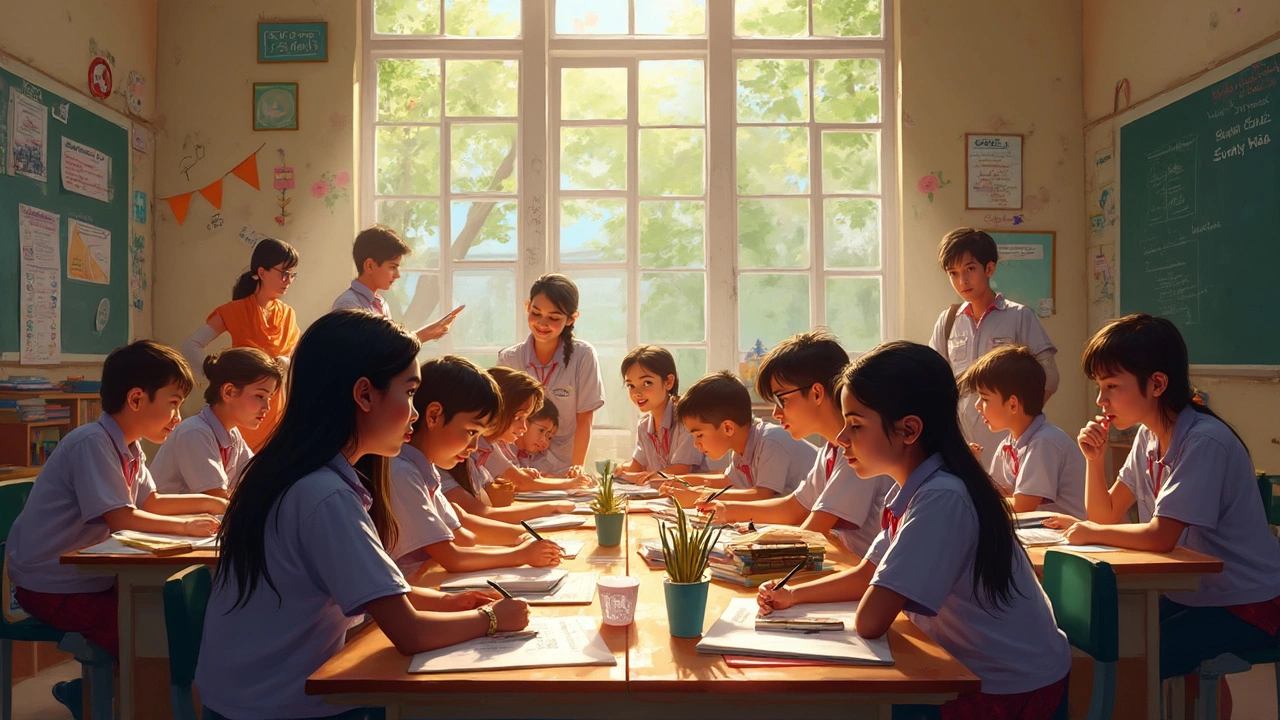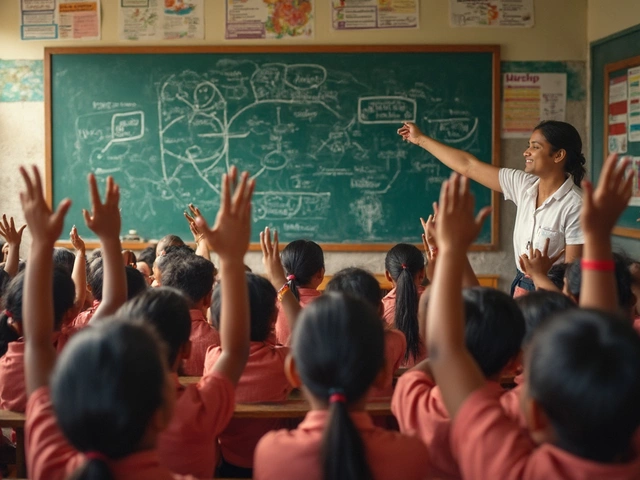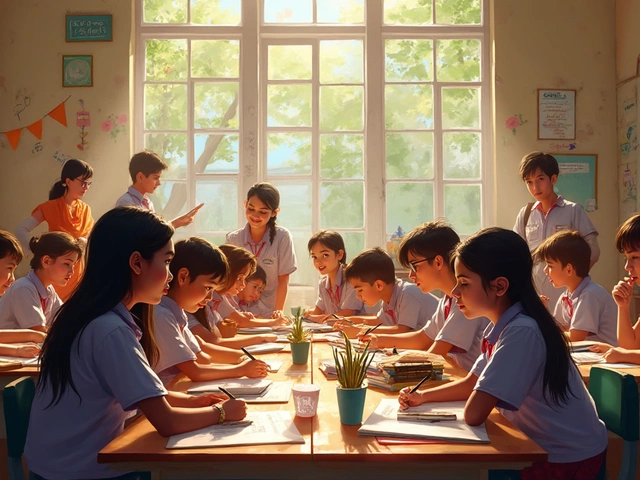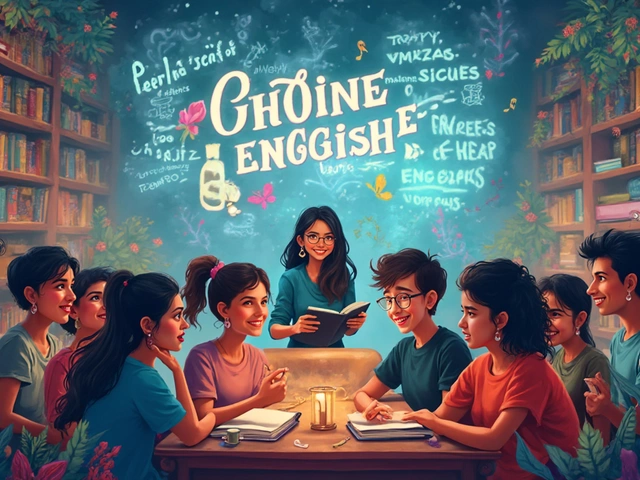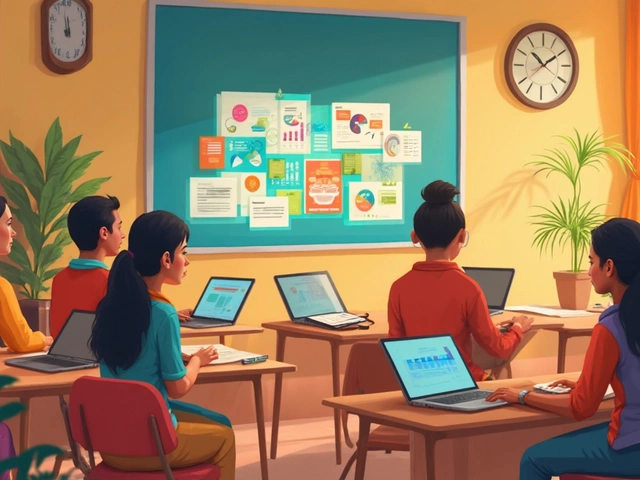Tons of families wonder if the American syllabus is easier than CBSE. There’s no single answer, but let’s get into the nuts and bolts so you can actually decide for yourself.
First things first, “easy” means something different for everyone. Maybe you’re stressed about endless CBSE textbooks and those marathon board exams. Maybe the project-heavy approach in American schools sounds friendlier, or maybe it just feels less intense. But here’s the catch: while the American syllabus usually has more projects and class discussions, CBSE dives deep into content and expects you to memorize loads of facts. The difference shows up big time in exams and grading too.
If you—or your kid—are about to switch systems, it helps to know exactly what changes. We’ll look at subjects, exam formats, daily homework, and even little things like how marks are given. Get ready to spot where you’ll need to adjust and find a rhythm that actually works, no matter which syllabus you pick.
- What Makes a Syllabus 'Easy' or 'Hard'?
- Key Differences: CBSE vs American School Systems
- Subject Choices and Flexibility
- Exams, Grading, and Study Load: The Real Story
- Switching Between the Two: Tips That Actually Help
What Makes a Syllabus 'Easy' or 'Hard'?
Let’s be real: when people compare school systems, they usually want to know which one feels less stressful—not just which one looks easy on paper. What actually makes a syllabus easy or hard? It depends on a mix of stuff: teaching style, the amount of info you have to learn, the way you’re tested, and your personal strengths.
The CBSE syllabus is famous for focusing a lot on how well students can remember facts and write long answers. Some love this straightforward, content-driven approach, but others find it overwhelming when exams roll around. On the flip side, the American syllabus leans more on understanding concepts, projects, teamwork, and making your own arguments. If you’re good at speaking up or showing your work in creative ways, you might find this approach easier.
Let’s break down what usually makes students call a syllabus hard:
- Heavy memorization without much focus on real-life application (more common in CBSE)
- Frequent project work, class presentations, or teamwork (very American style)
- Big, single-exam grading (CBSE board exams)
- Continuous assessment—lots of small grades throughout the year (typical in the US)
- How subjects are offered: fixed combos in CBSE, more choice in the US
Here’s a snapshot of what typically stresses students out in these two approaches:
| System | Main Stress Points | What’s Usually Easier |
|---|---|---|
| CBSE | Heavy syllabus, tough board exams, less project work | Clear exam format, set study materials |
| American | Frequent projects, regular homework, grading on participation | Flexible subjects, focus on understanding over rote learning |
Some kids do better with a predictable routine (like CBSE’s set syllabus and exams), while others thrive on new projects and ongoing feedback (the American way). There’s no one-size-fits-all. What fits you better usually depends on your own learning style, which teachers you get, and sometimes, just what you’re used to.
Key Differences: CBSE vs American School Systems
The biggest thing that jumps out when you compare the two is structure. The CBSE syllabus sticks to a set curriculum for all students, no matter their school or state. In Indian classrooms, everyone moves at the same pace and covers almost the exact same topics, especially for science and math. American schools, though, let students pick more electives and often let them move up or down in difficulty depending on their level and interest.
In CBSE, there’s a huge focus on theory, definitions, and detailed steps. You’ll see thick textbooks, written exams, and a system that rewards memorization. Teachers usually follow the textbook page by page, prepping students for board exams right from middle school.
American schools are a bit more relaxed about book learning. There’s still homework and tests, but teachers care more about projects, presentations, and class discussions. They want students to think out loud, work in groups, and get comfortable asking questions. You’ll notice open-book quizzes and grades for things like participation, not just for what’s written in a test.
Here’s another big one: grading. CBSE uses marks, aiming for that perfect 100, and final exams can carry up to 80% of your total grade. In the American system, grades are letters (A, B, C, etc.), and your final grade comes from a mix of tests, projects, homework, and sometimes even attendance. That means one bad exam won’t tank your overall result.
- Textbook vs. Flexibility: CBSE sticks to fixed books, while American classes might pick different textbooks, change reading lists, or let students suggest new topics to cover.
- Types of Assessment: Indian students mostly write, memorize, and repeat. American students do a mix – essays, creative projects, science fairs – to show what they’ve learned.
- Parent Involvement: In CBSE, parent-teacher meetings usually focus only on scores. In the US, parents get regular updates about all-round progress, including behavior and interests.
The bottom line? CBSE is strict, content-heavy, and pretty much the same everywhere. American schools have more freedom, choice, and focus on skills beyond just academics. If you’re used to one system, the other can feel like learning a new language at first.
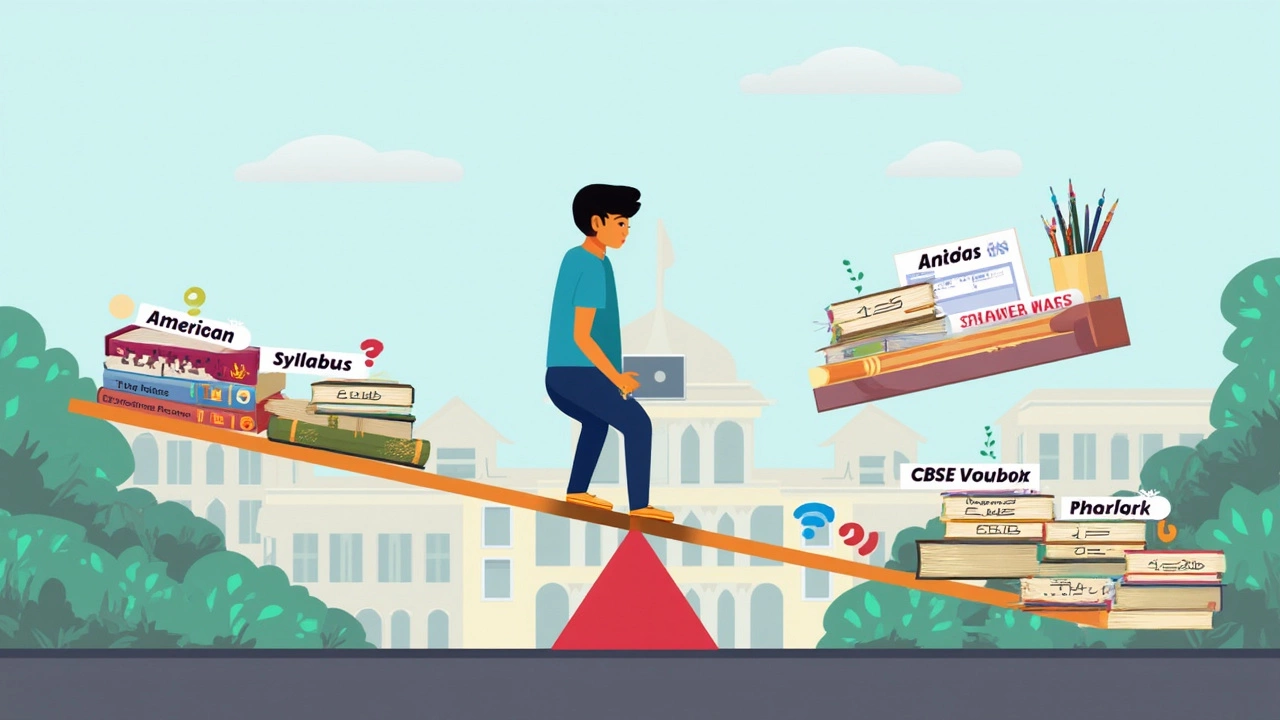
Subject Choices and Flexibility
Here’s where things really start to look different between the CBSE syllabus and the American system: the freedom to pick and mix your subjects. In CBSE, from Class 9 onward, you’re pretty much following a fixed set of subjects. You usually can’t drop that extra language or math without jumping through major hoops. For most students, it’s English, another language, math, science, and social studies—like it or not, that’s your plate.
Switch over to the American syllabus, and suddenly you’ve got more choice. Starting in high school, teens can pick electives. Want to try psychology, theater, or robotics? Often, you can. You still cover basics like math and English, but you build your timetable around your interests. Some schools even let you start advanced or AP (Advanced Placement) classes in fields you care about, which can help when applying to college later.
One thing that’s super clear: American schools usually have way more flexibility to swap out subjects or double down on the ones that match your talents. Here’s a quick look at how subject options work in both systems:
| System | Core Subjects (High School) | Elective Options | Can Drop Subjects? |
|---|---|---|---|
| CBSE | English, Second Language, Math, Science/Commerce/Humanities, Social Studies | Very limited; some skill subjects added recently | Rare, only in 11th/12th for few streams |
| American (Typical High School) | English, Math, Science, Social Studies | Wide variety (art, drama, business, coding, etc.) | Yes, after basic credits are done |
This flexibility helps kids in US schools play to their strengths. For instance, if you love art, you could choose extra visual design classes after finishing your core work. In CBSE, you’d probably still be stuck with compulsory science even if your passion runs elsewhere.
So if you’re really good at a certain subject—or know what you want to do after school—the American system makes it easier to focus there. On the flip side, CBSE is better for students who like a more structured routine and want to keep their options open a little longer before specializing.
Exams, Grading, and Study Load: The Real Story
If you really want to know which system feels easier or more stressful, check out how exams, grading, and daily study stack up. This is where the real difference between CBSE syllabus and the American syllabus comes out.
CBSE is famous (or maybe infamous) for its big board exams in Classes 10 and 12. These exams cover everything from an entire year—no joke. You need to know facts, formulas, and key points from the official NCERT textbooks. Most questions are written, and answers have to be clear and often to the point. Mess up one exam, and your overall grade can tank. Internal assessments and practicals do play a part, but the lion’s share of marks come down to those written tests.
The American system, on the other hand, leans on a “continuous assessment” model. Instead of one giant exam, you get quizzes, assignments, projects, class participation, and smaller tests spread throughout the year. Final exams exist, but they rarely decide your whole grade. You mess up a test? No freakout—you can usually make up lost points with good work on projects or participation. Grading is usually on a letter scale (A, B, C, etc.), with GPAs tracking your overall performance.
- CBSE syllabus is often crammed into fewer subjects, but the syllabus is exhaustive. Expect tons of memorizing and regular written homework.
- American schools usually let you mix and match more subjects. There’s less rote learning, more hands-on tasks, and sometimes group projects or presentations instead of just written work.
Study pressure is intense in CBSE, especially in board years—students sometimes grind for hours daily, especially when exams get closer. The American system spreads the load out, so cramming isn’t as extreme, but you’re expected to keep up with assignments steadily. Both systems can feel tough in different ways, but in CBSE, slipping behind is way harder to recover from.
Quick tip: If you find CBSE exams overwhelming, practice old exam papers—they really help you get used to the format. In American schools, get into the habit of finishing assignments early and joining class discussions, since those marks add up fast.
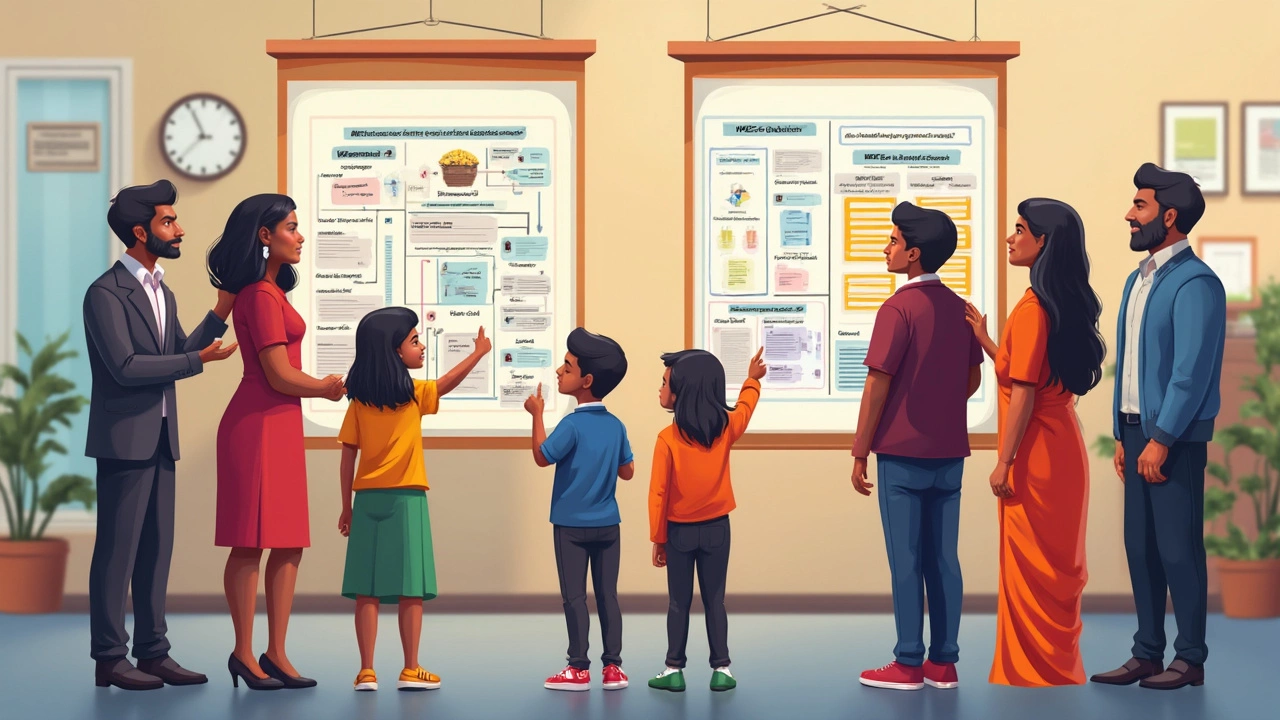
Switching Between the Two: Tips That Actually Help
Switching between the CBSE and American syllabus isn’t as simple as just picking up new textbooks. The way you learn, get assessed, and even choose your subjects can hit differently. Let’s break down what to watch for and how to stay on top of your game.
First up, the pace of learning. CBSE often sticks to a set syllabus where everyone learns the same stuff. The American system lets kids pick more electives and focus on what they enjoy, but there’s also a big focus on class discussions and projects. You’ll need to get comfortable speaking up and collaborating with classmates, sometimes on short notice.
If you’re moving from CBSE to American schools, be ready for more continuous projects and assignments. Less cramming for big tests—more steady work all year. Flip to the other side, and you might find CBSE’s term-end tests and detailed theory pretty daunting. You’ll need to practice writing clear, direct answers that hit every point.
Here’s how things typically stack up for kids making the switch:
| Area | CBSE | American |
|---|---|---|
| Assessment | Mainly big written exams (60-80% of final grade) | Projects, quizzes, participation, plus final exams (weights vary, sometimes no finals before high school) |
| Homework | Lots of written homework, regular assignments | Mix of reading, written work, creative projects |
| Class Participation | Less emphasized | Heavily emphasized. Counts toward grades, especially from middle school |
| Subject Flexibility | Fixed subjects until Grade 11 | Electives available from early grades |
If you’re a student or parent facing this switch, use these tips to adapt:
- Get a head start on the new style. Check out old exam papers or project rubrics before classes start. Ask the school counselor for details on how grading works; it can make or break your GPA.
- If you’re moving into CBSE syllabus, practice timed writing and focus on the exact way answers are expected in board exams.
- In American schools, don’t hesitate to join class discussions. You’ll get points just for speaking up and sharing ideas—even if you’re not always right.
- Use homework planners or online tools like Google Classroom. Teachers in both systems love updates on assignments but the way they share info can vary a ton.
- Watch out for curriculum gaps, especially in science and math. American math sometimes covers topics later than CBSE. Ask for bridge courses or extra help if you’re behind or ahead.
And don’t stress if things feel unfamiliar for a while. It usually takes a semester or two for students to get totally comfortable after switching curriculums. Stay open, keep asking questions, and you’ll learn to play to your strengths quickly.
